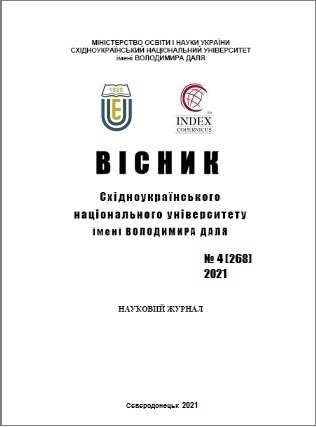Research of transport logistics transformation in Ukraine in the conditions of industry 4.0
DOI:
https://doi.org/10.33216/1998-7927-2021-268-4-66-71Keywords:
transport logistics, Industry 4.0, supply chain logistics, cloud services, logistics levelsAbstract
The article considers the main elements of the future modernization of transport logistics: smart rolling stock, unmanned vehicles, distributed registers, 3D printing technologies and the Internet of Things. An overview of Industry 4.0, its characteristics and expectations from its implementation is given. The changes that can occur with the main components of logistics in Industry 4.0 are studied: material flow, logistics operation, logistics function, logistics supply chain, logistics network, logistics system. It is shown that in Industry 4.0 in the logistics supply chain the number of possible directions of material flow will decrease, and products will be sent to the buyer immediately after its manufacture.
Industry 4.0 (or the Fourth Industrial Revolution) is gaining ground in developed countries. It is already necessary to plan the business processes of both the individual company and its partners, as well as their relationships, taking into account the implementation of Industry 4.0 in Ukraine. Transport logistics is undergoing the most significant changes. This article identifies the changes that will occur with the components of transport logistics: logistics supply chain, logistics system, logistics network, logistics operation, logistics function, material flow. The logistic supply chain of goods in Industry 4.0 and under current conditions is given. The division of companies providing logistics services into operators of different levels of logistics has been performed. The use of 3D printers will reduce the cost of finished products, but the question of utility for the economy as a whole has not been studied.
The application of new technologies has a significant impact on the transport and logistics industry in several factors. Which reduces costs and delivery time. Also, it allows you to focus on solving strategic problems in the functioning and development of enterprises, to identify additional competitive opportunities and reserves to increase profitability.
In addition, the expansion of the use of GS1 bar coding and RFID identification systems in the field of freight forwarding services, as well as the inclusion of transport in the global logistics system through the use of geographic information systems and global positioning systems (in particular, GPS and GLONASS).
References
1. Клюєв С.О. Сприятливі фактори і очікувані ефекти автоматизації та впровадження індустрії 4.0 на автомобільному транспорті / С.О. Клюєв, Я.А. Молодцов // Логістичне управління та безпека руху на транспорті: збірник наукових праць науково-практичної конференції здобувачів вищої освіти та молодих вчених., 1-2 грудня 2020 р., м. Рубіжне (Луганська обл.) – Міністерство освіти та науки України, СНУ ім. В. Даля. – Сєвєродонецьк. – 2020. – С. 73–76.
2. Клюєв С.О. Забезпечення безпеки залізничного транспорту в умовах цифровізації / С.О. Клюєв // Вісник СНУ ім. В. Даля. – Северодонецьк: CНУ ім. В. Даля. – 2020. – Вип. № 5 (261). – С.14–18.
3. Scheer A.W. Industry 4.0: From vision to implementation [Електроннийресурс] / A.W. Scheer // Whitepaper. – № 9. – August 2015. –Режим доступу: http://awsinstitut.de/wpcontent/uploads/2016/02/ AWScheer_Whitepaper5_Industry40EN.pdf.
4. Schwab K. The Fourth Industrial Revolution. What It Means and How to Respond [Електронний ресурс] / K. Schwab // Foreign Affairs. – December 12, 2015. –Режим доступу: https://www.foreignaffairs.com/articles/ 20151212/fourthindustrialrevolution.
5. Macaulay J. Internet of Things in Logistics: A collaborative report by DHL and Cisco on implications and use cases for the logistics industry [Електронний ресурс] / J. Macaulay, L. Buckalew, G. Chung, M. Kuckelhaus // DHL Trend Research, Cisco Consulting Services. – 2015. – Режим доступу: http://www.dhl.com/content/dam/Local_Images/g0/New_aboutus/innovation/DHLTrendReport_Internet_of_things.pdf.
6. Hulsmann T. Logistics 4.0 and The Internet of Things [Електронний ресурс] / T.Hulsmann // Workshop "Platforms for connected Factories of the Future". – Brussels. – 5 – 6 October. – 2015. – Режим доступу: http://ec.europa.eu/information_society/newsroom/ image/document/201544/8_huelsmann_11945.pdf.
7. Kliuiev S. Information systems application for managing reliability, security, risks and resources in road transport / S. Kliuiev, S. Pshenychnyi // Theses of international scientific and practical conference “Globalization of scientific and educational space. Innovations of transport. Problems, experience, prospects”. – The Ministry of education and science of Ukraine, Volodymyr Dahl East Ukrainian National University. – Severodonetsk. – 2020. – P. 51–53.
8. Field A. Logistics get a lot smarter [Електронний ресурс] / A. Field. – October. – 19. – 2015. – Режим доступу: http://newsroom.cisco.com/featurecontent? articleId=1722112
9. Schrоder M. Industry 4.0 And Its Impact On Supply Chain Risk Management [Електронний ресурс] / M. Schrо der, M. Indorf, W. Kersten // 14th International Conference "Reliability and Statistics in Transportation and Communication (RelStat)". – Riga, 15 – 18 October 2014. – Режим доступу: http://www.tsi.lv/sites/default/files/editor/science/ Conferences/RelStat14/schroeder_indorf_kersten.pdf.
10. Григорак М.Ю. Теоретичні положення інтелек туально зорієнтованої логістики / М.Ю. Григорак // Бізнес Інформ. – 2015. – №2. – C. 20 – 29.
11. Офіційний сайт Cвітового банку (The World Bank). LPIReport. Режим доступу: https://lpi.worldbank.org/.
12. Горбенко О.В. Логістика: навч. посіб. / О.В. Горбенко. – К.: Знання, 2014. – 315 с.
13. Крикавський Є.В. Логістичні системи: навч. посібник / Є.В. Крикавський, Н.В. Чорнописька. – 2_ге вид., доп. – Львів: Видавництво Львівської політехніки, 2012. – 312 с.
14. Клюєв С.О. Аналіз методів ідентифікації залізничного рухомого складу / С.О. Клюєв // Вісник СНУ ім. В. Даля. – Северодонецьк: CНУ ім. В. Даля. – 2017. – Вип. № 3 (233). – С.85–89.

